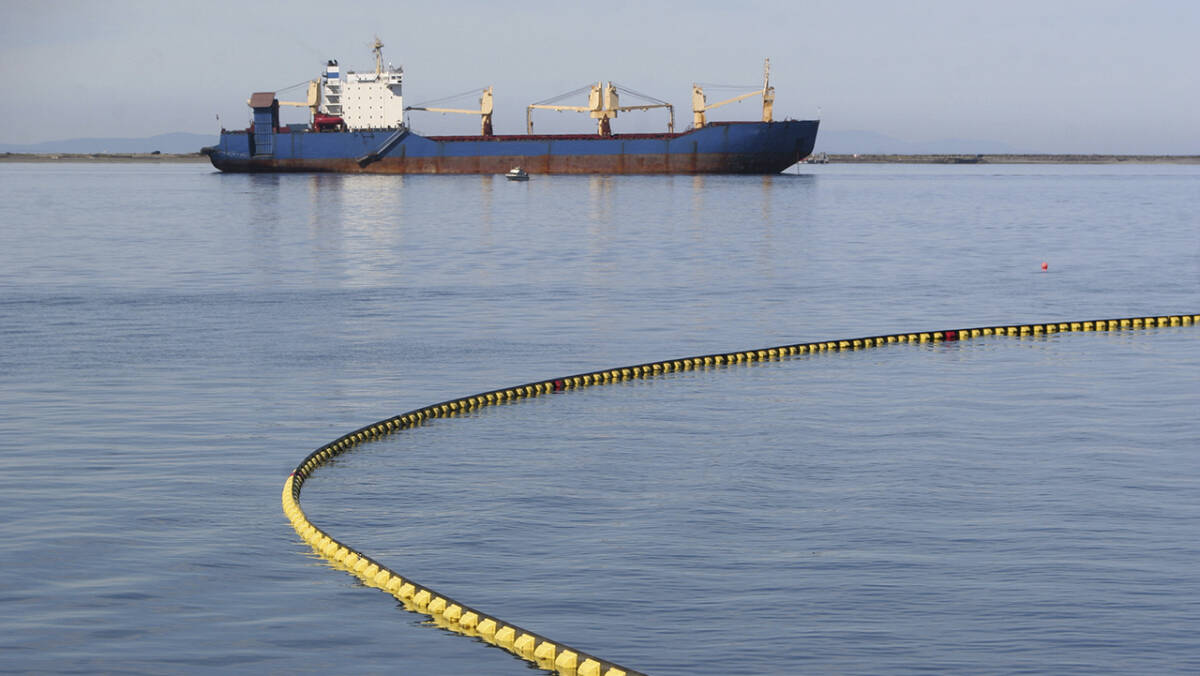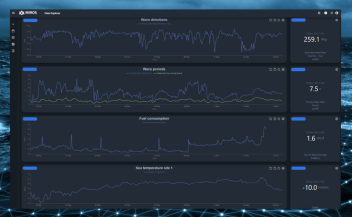The quicker, the better – early oil spill detection to protect marine environments
In the event of an oil spill, the most important factor in successful containment is an early response. The quicker teams can mobilise to contain a spill, the greater the chances of a successful clean-up.




Whilst the offshore industry is consistently improving its health and safety record, accidents can still happen. The impact of an oil spill can be catastrophic, both for the environment and the company’s reputation and bottom line, with the costs associated with the clean-up of an oil spill rising to billions of dollars.
Every offshore installation must prepare itself for the unlikely event of an oil spill. Employing a detection system is an integral part of any contingency plan and significantly reduces the potential for both environmental impact and the cost of response operations.
The Miros Oil Spill Detection (OSD) system is an essential tool for oil spill detection during mechanical oil recovery or chemical dispersant operations, tracking the oil slick over time and logging data from the operation to support the post-incident analysis.
The system equips users with early detection and mobilisation capabilities, limiting the chance of oil spreading over vast areas and making spills easier to combat. A radar combined with daylight and infrared cameras enhances the system’s detection and classification capabilities, adding valuable information to surveillance or spill response operations and allowing them to continue in poor visibility, or even at night.
How it works
The OSD system has a unique ability to interpret multiple indicators simultaneously, only triggering alarms when the ‘right’ combination is identified. Indicators – which include wave height and behaviour, surface characteristics, and drift – are collected and analysed using marine radars, as well as infrared and daylight cameras. The data is then processed, and the appropriate signal is sent to the user interface.
The unit can be used on its own on offshore installations, vessels, and shore-based stations, or as part of a sensor network. It uses radar backscatter images similarly to methods employed traditionally within navigation. However, rather than focusing on areas exhibiting greater amounts of backscatter (e.g., objects, vessels, coastlines), Miros OSD focuses on the absence of such backscatter.
The intensity of the reflected radar signal varies based on the structure of the ocean surface. A smooth ocean surface will reflect less energy than a rough surface, such as that produced in the presence of small capillary waves (created by wind).
When oil is present on the sea surface it impacts the surface tension of the water and, as a result, wind does not create the same capillary waves on the surface as in areas free of oil. Areas covered with oil appear smooth to the radar and will dampen the backscatter.
The system provides users with a radar image, optimised for visual identification and evaluation of oil spills on the sea surface.
Read more about our oil spill detection system.
From surveillance to recovery
Once the system has detected a spill, it is designed to provide automatic alarms and situational awareness. The user display shows the spill, as well as infrared and daylight camera views. The integrated system automatically tracks the spill, switching seamlessly between cameras for optimal response. Early warning data is provided to relevant offshore installations and vessels, as well as to appropriate coastal and port sites, with the aim of supporting response planning and decision-making.
At its most comprehensive, the system aggregates data from radar, infrared, and optical sensors into a single, intuitive user interface. The radar sensor provides spill detection and tracking. The infrared sensor allows for relative thickness estimation as well as spill recovery in darkness (or low visibility) and the optical sensor connects visual assessment to thickness estimation.
Miros OSD provides continuous monitoring of high-risk areas. The system automatically generates alarms based on oil spill detection and each individual slick is characterised according to area and drift. Thanks to the system’s capability to raise alarms promptly, the characterisation of spills and appropriate responses can be initiated quickly, with Miros OSD also aiding with the navigation of the recovery vessel towards the oil slick and correctly positioning booms and skimmers.
Whilst early detection capability is vital and keeps the oil from spreading over larger areas, thus making it easier to combat, a low false alarm rate is also paramount since false alarms that initiate manual activities can be very costly. Nevertheless, dialling down the sensitivity of a system to avoid false alarms is not an option as this could lead to the delayed detection of genuine spills.
Find more OSD-related resources: Case Studies, Webinars, Datasheets and more
Early response is key
Combining high-accuracy and early detection with a low false alarm rate lies at the heart of the system’s efficacy. With more than 250 systems deployed around the world, Miros OSD is a leading and trusted solution for oil spill surveillance and recovery. It has been verified in tests using various sorts of oil with different properties and was successfully used in recovery operations by Norwegian Clean Seas Association (NOFO) in their annual oil-on-water exercise since 2006.
In the event of an oil spill, the most important factor in successful containment is an early response. The quicker teams can mobilise to contain a spill, the greater the chances of a successful clean-up. Oil detection systems must be both reliable, accurate, and able to perform with little or no maintenance throughout the life of an asset.
As requirements to reduce the environmental impact from offshore activities are tightening, Miros OSD can help give regulators and operators the confidence that they are applying the best available technology to detect, monitor, and recover oil spills.
For further information contact: Herman A. Foss, VP Special vessels & Offshore Solutions.


